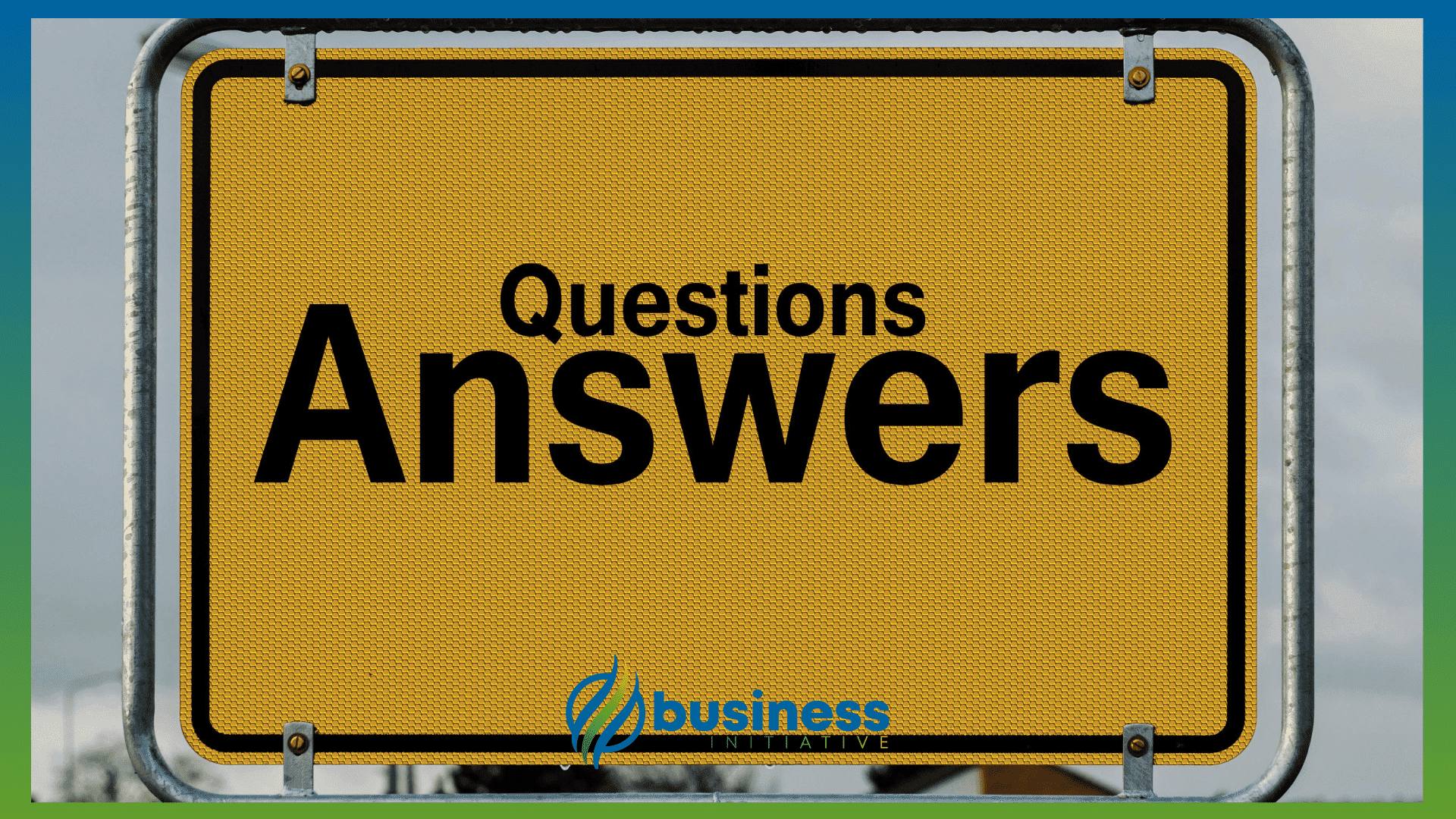Mergers and acquisitions (M&A) are strategic transactions where two companies combine (merger) or one company purchases another (acquisition).
These processes can significantly impact both businesses involved.
M&A activities are common for growth, market expansion, and diversification.
For example, when Facebook acquired Instagram, it aimed to broaden its social media footprint and target different user demographics.
Preparing a business for sale in an M&A transaction is crucial.
A well-prepared business is more attractive to potential buyers and can command a higher valuation.
According to a study by Deloitte, businesses that thoroughly prepare for M&A transactions tend to have smoother negotiations and achieve better outcomes.
Buyers are more confident in the stability and potential of a well-prepared business, reducing risks and uncertainties during the deal.
 Key Takeaways
Key Takeaways
- Conduct a Comprehensive Audit: Regularly assess your financials, operations, market position, and legal compliance to identify and address gaps before selling your business.
- Optimize Financial Health: Strengthen financial reporting, manage cash flow effectively, and reduce debt to enhance business valuation and attractiveness to buyers.
- Enhance Operational Efficiency: Streamline processes, strengthen supply chain management, and boost employee productivity to improve overall business performance and scalability.
- Strengthen Market Position: Enhance brand equity, expand market reach, and innovate product offerings to increase competitiveness and customer loyalty.
- Engage Professional Advisors: Leverage the expertise of financial advisors, legal counsel, and business consultants to ensure thorough preparation and successful M&A transactions.
Importance of Identifying and Addressing Gaps
Identifying and addressing gaps in your business before a sale can significantly impact its saleability and valuation.
Gaps can manifest in various forms, including financial discrepancies, operational inefficiencies, weak market positioning, and legal or compliance risks.
These weaknesses can deter potential buyers or lead to lower offers.
For instance, a business with inconsistent financial records or high debt levels might be seen as a risky investment.
Operational inefficiencies, such as outdated processes or reliance on key personnel, can raise concerns about the business’s scalability and sustainability.
Weak market positioning can signal to buyers that the business might struggle against competitors.
Legal and compliance issues can complicate the transaction and lead to costly post-sale disputes.
A proactive approach to identifying and addressing these gaps offers several benefits:
- Enhanced Valuation: A well-prepared business can command a higher price as buyers see reduced risks and increased potential.
- Smoother Transaction: Addressing issues beforehand leads to fewer surprises during due diligence, making the transaction process smoother and faster.
- Stronger Negotiating Position: Demonstrating thorough preparation can give sellers more leverage in negotiations, as buyers are reassured of the business’s stability and growth potential.
- Increased Buyer Confidence: Buyers are more likely to commit to a deal when they see that a business is robust, well-managed, and free of major issues.
By proactively tackling weaknesses, you set the stage for a successful M&A transaction, ensuring a smoother process and better outcomes for all parties involved.
 Table of Contents
Table of Contents
Conducting a Comprehensive Business Audit

Financial Health Check
A thorough financial health check is the cornerstone of preparing your business for sale.
Start by assessing your financial statements and cash flow.
Review your balance sheet, income statement, and cash flow statement to ensure they reflect the true financial status of your business.
Consistent and accurate financial records build trust with potential buyers.
Ensuring your financial records are up-to-date and precise is crucial.
Inaccurate or outdated records can raise red flags during the due diligence process.
Regular audits and bookkeeping help maintain this accuracy.
Using tools like QuickBooks or Xero can streamline this process and ensure you keep accurate records.
A well-managed financial system also highlights your business’s profitability and growth potential.
According to a Harvard Business Review article, businesses with transparent financials are more likely to attract buyers and secure better deals.
Operational Efficiency Analysis
Next, evaluate your business processes and workflows.
Identify bottlenecks and inefficiencies that could hinder productivity.
An efficient operation not only improves your bottom line but also makes your business more attractive to potential buyers.
Conduct a detailed analysis of your operations.
Look for areas where processes can be streamlined or automated.
For example, integrating software solutions like Slack for communication or Trello for project management can significantly improve efficiency.
Operational efficiency translates to cost savings and higher productivity, which are appealing to buyers.
A report by EY Parthenon found that businesses investing in digital tools and process improvements see a substantial increase in operational performance and value.
Market Position and Competitive Analysis
Review your market share and the competitive landscape.
Understanding where your business stands in the market helps identify strengths and areas for improvement.
Analyze your competitors and determine what sets your business apart.
Customer perceptions and brand positioning are also vital.
Use surveys and feedback tools to gather insights on how customers view your brand.
Tools like SurveyMonkey can be helpful in collecting and analyzing customer feedback.
Enhancing your market position makes your business more appealing.
Buyers look for companies with a strong brand and a loyal customer base.
According to Deloitte, businesses with a solid market position and clear value proposition tend to perform better in M&A transactions.
Legal and Compliance Review
Ensure all legal documents are in order.
This includes contracts, leases, intellectual property documents, and any other legal agreements.
Verifying compliance with industry regulations is also essential.
Non-compliance can lead to fines and legal issues, which can deter buyers.
Conduct regular legal audits to identify and address any potential issues.
Hiring a legal expert or using legal management software like Clio can help streamline this process.
Having a clean legal and compliance record provides peace of mind to buyers.
It shows that the business is well-managed and free from legal entanglements.
Our Sale Readiness Checklist highlights the importance of legal readiness in making a business more attractive and easier to sell.
Identifying Common Gaps and Weaknesses

Financial Discrepancies
Financial discrepancies are one of the most common issues that can affect the sale of a business.
Common financial red flags include inconsistent or inaccurate financial statements, unexplained variances in revenue and expenses, and high levels of debt.
These discrepancies can significantly impact buyer confidence and valuation.
Buyers look for businesses with clear, transparent financial records.
Inaccurate or misleading financial information can raise doubts about the business’s profitability and future prospects.
According to a Harvard Business Review article, buyers are more likely to negotiate lower prices or walk away from deals if they discover financial irregularities during due diligence.
Key Financial Red Flags:
- Inconsistent revenue reports
- Unexplained expenses
- High debt levels
- Poor cash flow management
Addressing these financial gaps involves regular audits, transparent reporting, and effective debt management.
Using financial management tools like QuickBooks or Xero can help maintain accurate records and improve overall financial health.
Operational Inefficiencies
Operational inefficiencies can severely impact a business’s scalability and integration, making it less attractive to potential buyers.
Common areas where businesses often fall short include outdated processes, reliance on manual tasks, and inadequate technology infrastructure.
Operational inefficiencies lead to higher costs and lower productivity.
For example, businesses that rely on manual inventory management may face stockouts or overstocking, leading to lost sales or increased holding costs.
Implementing modern solutions like SAP or Oracle for enterprise resource planning can streamline operations and enhance efficiency.
Common Operational Inefficiencies:
- Manual processes
- Outdated technology
- Poor supply chain management
- Inadequate employee training
By addressing these inefficiencies, businesses can improve productivity and reduce operational costs, making them more attractive to buyers.
A study by EY Parthenon found that businesses investing in digital tools and process improvements see a significant increase in operational performance and value.
Market Positioning Issues
Weak market positioning can deter potential buyers as it indicates the business may struggle to compete in its industry.
Signs of weak market positioning include declining market share, poor customer perceptions, and lack of brand recognition.
Market positioning issues can result from inadequate marketing strategies, ineffective customer engagement, or failure to innovate.
For example, a business that doesn’t keep up with market trends or customer preferences may lose relevance.
Conducting a thorough market analysis and leveraging tools like SurveyMonkey to gather customer feedback can provide valuable insights.
Signs of Weak Market Positioning:
- Declining market share
- Negative customer feedback
- Lack of brand visibility
- Inadequate marketing strategies
Enhancing market positioning involves strengthening brand equity, improving customer engagement, and staying ahead of industry trends.
According to Deloitte, businesses with a strong market position and clear value proposition are more attractive to buyers and tend to perform better in M&A transactions.
➤ MORE: Develop a USP to separate yourself from the pack & attract loyal customers!
Legal and Compliance Risks
Legal and compliance risks can complicate M&A transactions and deter potential buyers.
Typical legal issues in M&A include unresolved lawsuits, unclear ownership of intellectual property, and non-compliance with industry regulations.
Clear and compliant legal standing is essential for a smooth transaction.
Legal issues can lead to costly disputes and delay the sale process.
Ensuring all legal documents are in order and verifying compliance with relevant regulations is crucial.
Using legal management software like Clio can help manage and track legal obligations.
Typical Legal Issues in M&A:
- Unresolved lawsuits
- Unclear IP ownership
- Non-compliance with regulations
- Incomplete legal documentation
Addressing legal and compliance risks provides peace of mind to buyers and smoothens the transaction process.
Our breakdown on Legal Due Diligence in M&A highlights the importance of legal readiness in making a business more attractive and easier to sell.
Strategies for Addressing Financial Gaps

Strengthening Financial Reporting
Strengthening financial reporting is critical for any business preparing for sale.
Implementing robust financial reporting systems ensures accuracy and transparency.
Use tools like QuickBooks or Xero to streamline your financial processes.
These systems help maintain precise records and provide detailed insights into your financial health.
Regular financial audits and reviews are essential.
Conducting internal audits periodically helps identify discrepancies and areas needing improvement.
Hiring an external auditor can offer an unbiased view of your financial statements.
This not only increases credibility but also builds trust with potential buyers.
According to a Harvard Business Review article, businesses with transparent and accurate financial reporting attract more buyers and secure better deals.
Benefits of Strengthening Financial Reporting:
- Enhanced accuracy and transparency
- Increased buyer confidence
- Better valuation and negotiation leverage
➤ MORE: Key negotiation strategies every legitimate business owner must know
Improving Cash Flow Management
Cash flow is the lifeblood of any business.
Optimizing cash flow management ensures you have sufficient liquidity to meet your obligations and invest in growth opportunities.
Start by forecasting your cash flow to anticipate and manage cash needs.
Tools like Float can help create accurate cash flow projections.
Strategies for optimizing cash flow include tightening your receivables process, managing payables strategically, and reducing unnecessary expenses.
Encourage customers to pay promptly by offering discounts for early payments.
Negotiate extended payment terms with suppliers to maintain a healthy cash flow.
According to Investopedia, businesses with strong cash flow management are more attractive to buyers because they demonstrate financial stability and operational efficiency.
Key Cash Flow Management Strategies:
-
Tighten receivables process
-
Manage payables strategically
-
Reduce unnecessary expenses
Improving cash flow management ensures your business remains liquid and financially stable, making it more appealing to potential buyers.
Reducing Debt and Improving Creditworthiness
High levels of debt can deter potential buyers.
Reducing business debt enhances your creditworthiness and financial stability.
Start by assessing your current debt levels and identifying areas where you can cut costs.
Consider refinancing high-interest debt to reduce interest expenses.
Develop a debt reduction plan.
Prioritize paying off high-interest debts first, then gradually eliminate other debts.
Maintaining a healthy debt-to-equity ratio is crucial.
This article from Forbes suggests that businesses with lower debt levels and better credit profiles attract more buyers and secure better terms during the sale.
Steps to Reduce Debt:
-
Assess current debt levels
-
Refinance high-interest debt
-
Prioritize debt repayment
Improving your business’s credit profile involves consistent, timely payments and maintaining low credit utilization.
This boosts your credit score and demonstrates financial responsibility, which is highly attractive to buyers.
Benefits of Reducing Debt and Improving Creditworthiness:
By focusing on strengthening financial reporting, improving cash flow management, and reducing debt, you can address financial gaps effectively.
These strategies not only prepare your business for a successful sale but also enhance its overall financial health and attractiveness to buyers.
Enhancing Operational Efficiency

Streamlining Business Processes
Streamlining business processes is crucial for improving operational efficiency.
Start by identifying and eliminating inefficiencies in your current workflows.
This can be done through a thorough process audit.
Look for bottlenecks, redundant tasks, and areas where manual processes can be automated.
According to EY Parthenon, businesses that adopt digital tools and automation see significant improvements in productivity and cost savings.
Steps to Streamline Processes:
-
Conduct a process audit
-
Identify bottlenecks and redundant tasks
Implementing best practices and automation can lead to significant time and cost savings.
For example, automating invoicing and payment processes can reduce errors and ensure timely payments, enhancing overall cash flow management.
By streamlining operations, you create a more efficient and scalable business model, which is highly attractive to potential buyers.
Benefits of Streamlining Business Processes:
-
Increased productivity
-
Reduced operational costs
-
Enhanced scalability
Strengthening Supply Chain Management
Effective supply chain management is essential for operational efficiency.
Evaluate your current supply chain to identify areas for optimization.
This includes assessing supplier reliability, inventory management, and logistics.
Building resilience and reliability into your supply chain ensures that your business can withstand disruptions.
Diversifying suppliers and maintaining adequate inventory levels can prevent stockouts and reduce dependency on single sources.
Using tools like SAP for supply chain management can help monitor and optimize supply chain performance.
Key Areas for Supply Chain Optimization:
-
Supplier reliability
-
Inventory management
-
Logistics efficiency
Strengthening your supply chain not only improves operational efficiency but also enhances customer satisfaction by ensuring timely delivery of products.
According to a study from Deloitte, businesses with robust supply chain management practices experience fewer disruptions and achieve higher operational efficiency.
Benefits of Strengthening Supply Chain Management:
-
Increased reliability and resilience
-
Improved inventory management
-
Enhanced customer satisfaction
Improving Employee Productivity and Morale
Employee productivity and morale directly impact operational efficiency.
Investing in employee training and development programs can significantly boost productivity.
Provide regular training sessions to keep employees updated on the latest industry trends and best practices.
Platforms like LinkedIn Learning offer a wide range of courses that can help employees enhance their skills.
Creating a positive and productive workplace culture is equally important.
Recognize and reward employee achievements to boost morale.
Encourage open communication and provide opportunities for career growth.
According to Gallup, businesses with highly engaged employees experience 21% higher profitability.
Strategies for Improving Employee Productivity and Morale:
-
Invest in training and development programs
-
Recognize and reward achievements
-
Foster a positive workplace culture
Improving employee productivity and morale not only enhances operational efficiency but also creates a more dynamic and motivated workforce.
This can lead to higher retention rates and attract potential buyers who value a strong and committed team.
Benefits of Improving Employee Productivity and Morale:
-
Increased productivity
-
Higher employee engagement and retention
By streamlining business processes, strengthening supply chain management, and improving employee productivity and morale, you can significantly enhance operational efficiency.
These strategies not only prepare your business for a successful sale but also contribute to its long-term growth and success.
Strengthening Market Position

Enhancing Brand Equity
Enhancing brand equity involves building and maintaining a strong brand image.
A strong brand resonates with customers and distinguishes your business from competitors.
Start by defining your brand’s unique value proposition.
What makes your business special?
Use this to craft a compelling brand story.
Effective marketing and public relations strategies play a crucial role in enhancing brand equity.
Consistent messaging across all channels helps build a recognizable and trustworthy brand.
Engage with your audience through social media, email marketing, and public relations campaigns.
According to a Nielsen report, 83% of consumers say they completely or somewhat trust the recommendations of friends and family.
These credible referrences then lead directly to sales which boost reputation.
Key Strategies for Enhancing Brand Equity:
- Define your unique value proposition
- Maintain consistent messaging
- Engage with your audience through multiple channels
By enhancing brand equity, you increase customer loyalty and brand recognition, which can significantly boost your business’s appeal to potential buyers.
Benefits of Enhancing Brand Equity:
- Increased customer loyalty
- Higher brand recognition
- Greater business valuation
Expanding Market Reach
Expanding market reach involves exploring new markets and customer segments.
This can be achieved by diversifying your product or service offerings or by entering new geographic markets.
Conduct market research to identify potential opportunities and tailor your strategies accordingly.
Leveraging digital marketing and e-commerce is essential for expanding market reach.
Utilize tools like Google Analytics to understand customer behavior and preferences.
Invest in search engine optimization (SEO) and social media marketing to increase your online presence.
According to a Statista report, digital advertising spending in the U.S. is projected to reach $450 billion by 2028, reflecting its growing importance in reaching new customers.
Key Strategies for Expanding Market Reach:
-
Conduct market research
-
Diversify product or service offerings
-
Invest in digital marketing and e-commerce
Expanding your market reach not only increases revenue but also enhances your business’s growth potential, making it more attractive to buyers.
Benefits of Expanding Market Reach:
-
Increased revenue
-
Enhanced growth potential
-
Greater attractiveness to buyers
Innovating Product and Service Offerings
Innovating product and service offerings is crucial for staying competitive and meeting market demand.
Continuous improvement and innovation ensure that your business remains relevant and appealing to customers.
Regularly review your product or service portfolio and identify areas for enhancement or expansion.
Aligning offerings with market demand requires staying informed about industry trends and customer preferences.
Use tools like SurveyMonkey to gather feedback and insights from your customers.
Implementing their suggestions can lead to more customer-centric innovations.
Key Strategies for Innovating Offerings:
-
Regularly review and update product/service portfolio
-
Gather and act on customer feedback
-
Stay informed about industry trends
Innovation drives customer satisfaction and loyalty, which are critical for long-term success.
Here’s a similar statistic based on the provided article:
A report from PwC reveals that 55% of consumers rank search engines as their top source for pre-purchase information, highlighting the critical role of online search in consumer decision-making.
Benefits of Innovating Product and Service Offerings:
By enhancing brand equity, expanding market reach, and innovating product and service offerings, you strengthen your market position.
These strategies not only prepare your business for a successful sale but also contribute to its long-term growth and resilience.
Ensuring Legal and Compliance Readiness

Conducting Legal Audits
Conducting regular legal audits is essential for ensuring your business is legally sound and ready for a sale.
Legal audits involve a thorough review of all legal documents, contracts, and compliance records.
Regular legal health checks can help identify and address potential legal issues proactively, preventing costly disputes during the sale process.
Legal audits should cover all aspects of your business, including employment contracts, supplier agreements, and customer contracts.
Hiring an experienced legal professional or using legal management software like Clio can streamline this process.
Our Sale Readiness Checklist shows how businesses that conduct regular legal audits are better prepared for M&A transactions and face fewer legal hurdles.
Key Steps in Conducting Legal Audits:
-
Review all contracts and agreements
-
Ensure compliance with industry regulations
-
Address any potential legal issues proactively
By conducting regular legal audits, you ensure your business is legally compliant and reduce the risk of legal complications during the sale.
Benefits of Conducting Legal Audits:
-
Increased legal compliance
-
Reduced risk of legal disputes
-
Smoother M&A transactions
Strengthening Compliance Framework
Strengthening your compliance framework is crucial for maintaining legal and regulatory compliance.
Implementing robust compliance policies ensures that your business adheres to all relevant laws and regulations.
This includes industry-specific regulations, labor laws, and environmental standards.
Training employees on compliance standards is vital.
Regular training sessions can help employees understand and adhere to compliance policies.
Using training platforms like LinkedIn Learning can provide comprehensive compliance training for your team.
According to our Guide to Risk Management, businesses with strong compliance frameworks are better equipped to manage regulatory risks and avoid penalties.
Key Strategies for Strengthening Compliance Framework:
-
Implement robust compliance policies
-
Conduct regular employee training
-
Monitor and update compliance practices
A strong compliance framework not only ensures legal adherence but also enhances your business’s reputation and attractiveness to buyers.
Benefits of Strengthening Compliance Framework:
-
Improved regulatory adherence
-
Enhanced business reputation
-
Increased attractiveness to buyers
Securing Intellectual Property
Securing intellectual property (IP) is critical for protecting your business’s valuable assets.
Intellectual property includes patents, trademarks, and copyrights.
Protecting these assets is essential for maintaining your business’s competitive edge and value.
Start by identifying all your business’s IP assets.
This includes inventions, brand names, logos, and proprietary content.
Protect these assets through appropriate legal measures, such as registering patents and trademarks.
Tools like LegalZoom can help with the registration process.
The importance of IP in business valuation cannot be overstated.
According to a Linkedin, businesses with well-protected IP assets have higher valuations and attract more buyers.
Buyers view IP as a valuable asset that can provide a competitive advantage and drive future growth.
Key Steps in Securing Intellectual Property:
-
Identify all IP assets
-
Register patents, trademarks, and copyrights
-
Monitor and enforce IP rights
Securing your IP assets ensures they remain protected and enhances your business’s overall value and attractiveness to potential buyers.
Benefits of Securing Intellectual Property:
-
Protection of valuable assets
-
Increased business valuation
-
Enhanced competitive edge
By conducting legal audits, strengthening your compliance framework, and securing intellectual property, you can ensure your business is legally and compliance-ready for a sale.
These strategies not only prepare your business for a successful M&A transaction but also enhance its overall value and attractiveness to buyers.
Engaging Professional Advisors

Role of Financial Advisors and Accountants
Engaging financial advisors and accountants is crucial when preparing your business for sale.
Expert financial guidance ensures your business is in top financial health, making it more attractive to buyers.
Financial advisors help optimize your financial statements, manage cash flow, and reduce debt.
They also assist in creating accurate financial projections that appeal to potential buyers.
Selecting the right financial advisors is essential.
Look for advisors with experience in your industry and a proven track record in M&A transactions.
According to an article from Harvard Business Review, businesses that work with experienced financial advisors tend to secure better deals and face fewer financial surprises during the sale process.
Key Benefits of Engaging Financial Advisors:
- Optimized financial statements
- Improved cash flow management
- Accurate financial projections
Selecting the Right Financial Advisors:
- Seek industry experience
- Check track records in M&A
- Ensure a good fit with your business
Engaging financial advisors and accountants not only enhances your financial health but also boosts buyer confidence and helps secure better sale terms.
Benefits of Financial Advisors and Accountants:
- Enhanced financial health
- Increased buyer confidence
- Better sale terms
Benefits of Legal Counsel
Navigating the legal complexities of an M&A transaction requires professional legal counsel.
Experienced M&A lawyers can help you understand the legal implications of the sale, draft and review contracts, and ensure compliance with relevant regulations.
They also assist in identifying and addressing potential legal risks.
Choosing experienced M&A lawyers is critical.
Look for legal counsel with a deep understanding of your industry and a history of successful M&A transactions.
A study from Deloitte found that businesses with professional legal support are better equipped to handle legal challenges and ensure a smoother transaction process.
Key Benefits of Engaging Legal Counsel:
- Understanding legal implications
- Drafting and reviewing contracts
- Ensuring regulatory compliance
Tips for Choosing the Right M&A Lawyers:
- Look for industry expertise
- Check track records in M&A
- Ensure good communication
Engaging professional legal counsel not only mitigates legal risks but also ensures a smooth and legally sound transaction.
Benefits of Legal Counsel:
- Mitigated legal risks
- Smooth transaction process
- Enhanced legal compliance
Leveraging Business Consultants
Business consultants bring valuable external perspectives to identify and address gaps in your business.
They can offer insights into operational inefficiencies, market positioning issues, and strategic growth opportunities.
External business consulting helps you prepare your business for sale by ensuring it is attractive and ready for potential buyers.
The value of external business consulting lies in their ability to provide objective assessments and actionable recommendations.
Business consultants use tools and methodologies like SWOT analysis and market research to identify strengths, weaknesses, opportunities, and threats.
According to Be Destined, businesses that leverage external consulting see improved performance and higher valuations.
Key Benefits of Leveraging Business Consultants:
-
Objective business assessments
-
Actionable recommendations
-
Improved operational efficiency
How Consultants Identify and Address Gaps:
- Conduct SWOT analysis
- Perform market research
- Recommend strategic improvements
Engaging business consultants ensures that your business is well-prepared for sale, making it more attractive to buyers and increasing its overall value.
Benefits of Business Consultants:
By engaging financial advisors, legal counsel, and business consultants, you can ensure your business is thoroughly prepared for sale.
These professionals provide expert guidance, mitigate risks, and enhance the overall value and attractiveness of your business to potential buyers.
Case Studies and Success Stories

By examining both successful and failed M&A deals, you can glean valuable lessons to prepare effectively for your own business transactions.
Successful M&A preparation involves thorough financial reporting, strong market positioning, operational efficiency, and strategic planning.
Avoiding common pitfalls such as cultural clashes, overvaluation, and integration challenges can lead to more favorable outcomes.
Real-Life Examples of Successful M&A Preparation
Real-life examples of successful M&A preparation provide valuable insights into the strategies that lead to favorable outcomes.

One notable example is the acquisition of LinkedIn by Microsoft.
This $26.2 billion deal in 2016 was successful due to LinkedIn’s thorough preparation and robust business model.
LinkedIn had a clear market position, strong brand equity, and solid financial health.
These factors made the company an attractive acquisition target for Microsoft, which sought to expand its professional networking capabilities.
Key strategies in LinkedIn’s preparation included:
- Strong Financial Reporting: LinkedIn maintained accurate and transparent financial records, boosting buyer confidence.
- Market Positioning: LinkedIn’s established brand and large user base added significant value.
- Operational Efficiency: The company optimized its processes, ensuring scalability and smooth integration post-acquisition.

Another example is Disney’s acquisition of Pixar in 2006.
Disney paid $7.4 billion to acquire Pixar, aiming to revitalize its animation division.
Pixar’s innovative culture, strong intellectual property portfolio, and efficient operations made it an ideal acquisition.
Disney’s strategic move to maintain Pixar’s operational independence post-acquisition ensured continued creativity and productivity.
Key Takeaways:
- Thorough Preparation: Accurate financial records and strong market positioning attract buyers.
- Operational Efficiency: Streamlined processes enhance scalability and integration.
- Strategic Independence: Maintaining operational independence can preserve company culture and innovation.
Lessons Learned from Failed M&A Deals
Learning from failed M&A deals is equally, if not more important.

One infamous example is the merger of AOL and Time Warner in 2000.
Valued at $165 billion, this merger is often cited as one of the worst in history.
The deal failed due to several key issues:
- Cultural Clash: The vastly different corporate cultures of AOL and Time Warner led to significant conflicts and inefficiencies.
- Overvaluation: AOL was overvalued during the dot-com bubble, leading to inflated expectations and eventual disappointment.
- Integration Challenges: The companies struggled to integrate operations, resulting in poor synergy and financial losses.

Another example is the attempted merger between Sprint and T-Mobile in 2014, which failed due to regulatory hurdles and strategic misalignment.
The deal faced strong opposition from regulatory bodies concerned about reduced competition in the telecom industry.
Additionally, the companies had different strategic visions, making it difficult to align their operations and goals.
Common Pitfalls and How to Avoid Them:
- Cultural Compatibility: Ensure cultural alignment between merging companies to avoid conflicts.
- Realistic Valuation: Conduct thorough due diligence to avoid overvaluation and inflated expectations.
- Integration Planning: Develop a detailed integration plan to address potential operational challenges.
FAQs - Frequently Asked Questions About Ensuring Your Business is Optimized to Sell

Why is it important to identify business gaps before a sale?
Identifying gaps helps improve business value and attractiveness.
It reduces risks and enhances buyer confidence.
Learn More...
Identifying business gaps before a sale is crucial because it allows business owners to address any weaknesses that might deter potential buyers or reduce the sale price. By conducting a comprehensive audit of financial, operational, market, and legal aspects, businesses can improve their valuation and attractiveness to buyers.
Addressing gaps such as financial discrepancies, operational inefficiencies, or legal risks reduces uncertainties and makes the business more appealing. For example, a business with a clean financial record and efficient operations is more likely to command a higher valuation and achieve a smoother transaction process.
According to a study by Deloitte, businesses that prepare thoroughly for M&A transactions tend to achieve better outcomes and smoother negotiations, as buyers are more confident in the stability and potential of a well-prepared business.
What are the most common financial gaps that affect business sales?
Common financial gaps include inconsistent financial statements, high debt, and poor cash flow management.
These issues can decrease buyer confidence and lower valuation.
Learn More...
Common financial gaps that can negatively impact business sales include inconsistent or inaccurate financial statements, high levels of debt, and poor cash flow management. These issues can significantly reduce buyer confidence and result in lower valuations.
Inconsistent financial statements raise red flags for buyers, leading to doubts about the business's profitability and future prospects. High debt levels can deter buyers who are concerned about financial stability and risk.
- Inconsistent revenue reports
- High debt levels and poor cash flow management
- Unexplained variances in revenue and expenses
To address these gaps, businesses should conduct regular financial audits, maintain accurate records using tools like QuickBooks or Xero, and implement effective debt management strategies.
How can operational efficiency impact the sale of a business?
Operational efficiency increases business attractiveness and valuation.
It reduces costs and improves scalability.
Learn More...
Operational efficiency plays a critical role in the sale of a business as it directly impacts its attractiveness and valuation. Efficient operations lead to cost savings and higher productivity, which are appealing to potential buyers.
Businesses with streamlined processes and modern technology infrastructure are more likely to be viewed as scalable and sustainable, reducing buyer concerns about integration challenges.
- Streamlined processes reduce operational costs.
- Improved scalability enhances business value.
- Modern technology infrastructure boosts buyer confidence.
According to EY Parthenon, businesses investing in digital tools and process improvements see substantial increases in operational performance and value, making them more attractive to buyers.
What legal and compliance risks should businesses address before a sale?
Businesses should address unresolved lawsuits, unclear IP ownership, and regulatory non-compliance.
Legal readiness ensures a smoother transaction process.
Learn More...
Legal and compliance risks that businesses should address before a sale include unresolved lawsuits, unclear ownership of intellectual property (IP), and non-compliance with industry regulations. These issues can complicate M&A transactions and deter potential buyers.
Having a clear legal standing is essential for a smooth transaction, as legal issues can lead to costly disputes and delay the sale process.
- Ensure all legal documents are in order.
- Verify compliance with relevant regulations.
- Use legal management software like Clio for tracking obligations.
Conducting regular legal audits and securing intellectual property can provide peace of mind to buyers, enhancing the business's attractiveness and ensuring a smoother transaction process.
Why should businesses engage professional advisors before a sale?
Professional advisors provide expertise and guidance for a successful sale.
They help optimize financial health and legal compliance.
Learn More...
Engaging professional advisors before a sale is crucial because they provide valuable expertise and guidance that can significantly impact the transaction's success. Financial advisors, legal counsel, and business consultants help optimize the business's financial health, ensure legal compliance, and address any gaps that might affect the sale.
Financial advisors assist in improving cash flow management, reducing debt, and creating accurate financial projections that appeal to buyers. Legal counsel navigates the complexities of M&A transactions, drafting contracts and ensuring compliance with regulations.
Business consultants offer external perspectives, identifying operational inefficiencies, market positioning issues, and growth opportunities. According to Harvard Business Review, businesses that work with experienced advisors secure better deals and face fewer surprises during the sale process.
How can enhancing brand equity increase a business's sale value?
Strong brand equity increases customer loyalty and business valuation.
It distinguishes the business from competitors.
Learn More...
Enhancing brand equity can significantly increase a business's sale value by building and maintaining a strong brand image that resonates with customers. A well-established brand distinguishes the business from competitors, creating a competitive advantage that appeals to potential buyers.
Brand equity is built through effective marketing strategies, consistent messaging, and customer engagement. By defining a unique value proposition and crafting a compelling brand story, businesses can boost their appeal and command higher valuations.
- Increased customer loyalty and trust.
- Higher brand recognition and visibility.
- Greater competitive advantage in the market.
According to Nielsen, 83% of consumers trust recommendations from friends and family, highlighting the importance of strong brand equity in influencing buyer decisions and driving sales.
What are the benefits of expanding market reach before a sale?
Expanding market reach increases revenue and growth potential.
It enhances business attractiveness to buyers.
Learn More...
Expanding market reach before a sale offers significant benefits by increasing revenue, enhancing growth potential, and making the business more attractive to buyers. By exploring new markets and customer segments, businesses can diversify their offerings and capture additional market share.
Investing in digital marketing and e-commerce strategies helps reach a broader audience, while market research identifies opportunities for expansion. This growth potential is appealing to buyers seeking businesses with strong future prospects.
- Increased revenue from new markets.
- Enhanced competitiveness and market share.
- Greater attractiveness to potential buyers.
According to a Statista report, digital advertising spending in the U.S. is projected to reach $450 billion by 2028, underscoring the importance of digital strategies in expanding market reach and driving growth.
In Summary…
In this article, we explored the critical steps to identifying and addressing business gaps before a sale.
We discussed the importance of conducting a comprehensive business audit, identifying common gaps and weaknesses, and implementing strategies to address financial, operational, and market positioning issues.
We also highlighted the significance of ensuring legal and compliance readiness, engaging professional advisors, and learning from real-life case studies and success stories.
Preparing your business for a successful sale requires a proactive, growth-oriented approach.
By thoroughly addressing gaps and strengthening your business’s overall health, you enhance its value and attractiveness to potential buyers.
The benefits of such preparation are manifold, including higher valuation, smoother transactions, and increased buyer confidence.
As you embark on this journey, remember that thorough preparation is the key to unlocking hidden value and achieving the best possible outcome in an M&A transaction.

We encourage all business owners to take the first step by conducting a self-assessment.
Identify areas where your business may have gaps and start working on strategies to address them.
Use the tools and examples provided in our Due Diligence Checklist as a guide to help you through the process.
Invitation to Seek Professional Assistance
For those seeking professional guidance, Business Initiative offers expert advisory services tailored to your needs.
Whether you need financial advisors, legal counsel, or business consultants, we have the resources and contacts to assist you.
Visit our website to learn more about our services and schedule a consultation call.
Use our contact form to reach out to us directly.
Motivational Message for Future Growth
Remember, preparing your business for sale is not just about fixing gaps; it’s an opportunity for growth and improvement.
Embrace this process with a positive mindset and view it as a chance to make your business stronger and more resilient.
By doing so, you set the stage for a successful sale and future growth.
For more insights and tips on business growth and M&A strategies, subscribe to our Initiative Newsletter.
Stay connected and follow us on X for the latest updates and expert advice.
Unlock hidden value in your business today.
Schedule a FREE 30-minute consultation with Business Initiative and take the first step towards a successful sale.
Additional Resources and Information
To help you further explore and address business gaps before a sale, here are some valuable resources and information that can guide you through various aspects of this process:
Financial Management and Reporting
-
Harvard Business Review - The Big Idea: The New M&A Playbook: An article providing insights into strategic M&A practices and the importance of thorough financial reporting.
-
Investopedia - Cash Flow: A comprehensive guide on managing cash flow, highlighting its significance in maintaining financial stability and attractiveness to buyers.
-
Forbes - How to Improve Your Business Credit Score: Tips and strategies for improving your business creditworthiness, which is crucial for attracting potential buyers.
Operational Efficiency and Improvement
-
EY Parthenon - How can your digital investment strategy reach higher returns?: A report on the benefits of digital investments and process improvements for operational efficiency.
-
McKinsey & Company - Using M&A as a launchpad for transformation: Insights on how businesses can leverage M&A to drive operational improvements and strategic growth.
Market Positioning and Competitive Analysis
-
Deloitte - The Role of Preparation in M&A Transactions: An in-depth look at how proper preparation, including market positioning, can enhance the outcomes of M&A transactions.
-
Nielsen - Global Trust in Advertising Report: A report highlighting the importance of brand equity and customer trust in marketing and advertising.
Legal and Compliance Readiness
-
Business Initiative - Sale Readiness Checklist for Business: A comprehensive checklist to ensure legal and compliance readiness, making your business more attractive to buyers.
-
Business Initiative - Litigation & Legal Due Diligence: A guide on conducting legal audits and ensuring compliance to prevent legal complications during M&A transactions.
Professional Advisory and Consulting
-
Business Initiative - Essential Risk Mitigation Strategies for Business Transactions: Strategies to mitigate risks and ensure a successful M&A transaction.
-
Be Destined - Leverage Industry Insights for Maximum Business Value: How external business consulting can improve performance and increase business value.
Case Studies and Real-Life Examples
-
Forbes - Why Microsoft Bought LinkedIn: An analysis of the successful acquisition of LinkedIn by Microsoft, highlighting key strategies and preparation steps.
-
Brand Poets - Disney Pixar: Buena Vista Integration Post-Acquisition: A detailed look at Disney’s acquisition of Pixar, showcasing successful integration strategies.
These resources provide comprehensive information and practical insights to help you effectively identify and address gaps in your business before a sale, ensuring a smoother and more successful M&A transaction.
Research and Methodology
Research Approach
The research for this article was conducted using a thorough literature review and analysis of expert opinions.
The aim was to provide practical insights and actionable strategies for business owners preparing for M&A transactions.
Literature Review
A comprehensive literature review was conducted to gather insights from reputable sources on mergers and acquisitions (M&A).
Key sources included industry reports, academic journals, and business publications.
The primary focus was on identifying best practices, common challenges, and effective strategies for preparing a business for sale.
Notable sources included:
- Harvard Business Review for insights on strategic M&A practices.
- Deloitte reports on M&A transaction preparation and due diligence.
- McKinsey & Company for case studies and best practices in M&A.
- EY Parthenon for data on digital investments and operational improvements.
Analysis of Expert Opinions
In addition to the literature review, expert opinions and reviews from leading professionals in the field were analyzed.
This included:
- Financial advisors on optimizing financial health and reporting.
- Legal professionals on ensuring compliance and legal readiness.
- Business consultants on operational efficiency and market positioning.
These expert insights were gathered from publicly available sources such as industry publications, professional blogs, and consultancy reports.
The analysis focused on extracting practical recommendations and real-world examples relevant to the topic.
Data Collection Methods
Secondary Data
Secondary data was the primary source of information for this article.
The data collection process involved:
- Reviewing industry reports and whitepapers from major consultancy firms like Deloitte, McKinsey & Company, and EY Parthenon.
- Analyzing articles from business publications such as Harvard Business Review and Forbes to gather expert opinions and case studies.
- Examining case studies of notable M&A transactions to identify successful strategies and common pitfalls.
Data Analysis
The collected data was systematically analyzed to identify key themes and actionable insights.
The analysis process included:
- Thematic coding of literature and expert opinions to categorize best practices and strategies for M&A preparation.
- Comparative analysis of case studies to highlight effective approaches and lessons learned from both successful and failed M&A transactions.
- Synthesis of findings to provide a coherent narrative and practical recommendations for business owners.
The research methodology employed in this article was designed to provide a well-rounded understanding of the critical steps required to identify and address business gaps before a sale.
By leveraging a detailed literature review and analysis of expert opinions, the article offers practical, evidence-based strategies to enhance a business’s value and attractiveness in M&A transactions.
The insights and recommendations are grounded in authoritative sources and real-world examples, ensuring their relevance and applicability to business owners preparing for M&A.
Sources
- Harvard Business Review - The Big Idea: The New M&A Playbook
- EY Parthenon - How can your digital investment strategy reach higher returns?
- Business Initiative - Sale Readiness Checklist for Business - Boost Market Value & Attract Serious Buyers
- Fortune - Why the AOL-Time Warner Merger Failed
- CNET - Sprint and T-Mobile Merger FCC Approval
- Nielsen - Global Trust in Advertising Report
- Statista - Digital Advertising Revenue in the US
- PwC - Consumer Insights Survey
- Linkedin - The Strategic Value of Patents: Diversifying for Organization Resilience
- Business Initiaitive - Essential Risk Mitigation Strategies for Business Transactions | Secure Your Investment
- Deloitte - The Role of Preparation in M&A Transactions
- McKinsey & Company - Using M&A as a launchpad for transformation
- Business Initiaitve - Litigation & Legal Due Diligence | Comprehensive Guide to M&A
- Investopedia - Cash Flow
- Forbes - How to Improve Your Business Credit Score
- Deloitte - Supply Chain and Network Operations
- Gallup - Employee Engagement Drives Growth
- Be Destined - Leverage Industry Insights for Maximum Business Value
- Forbes - Why Microsoft Bought LinkedIn
- Brand Poets - Disney Pixar: Buena Vista Integration Post-Acquisition


